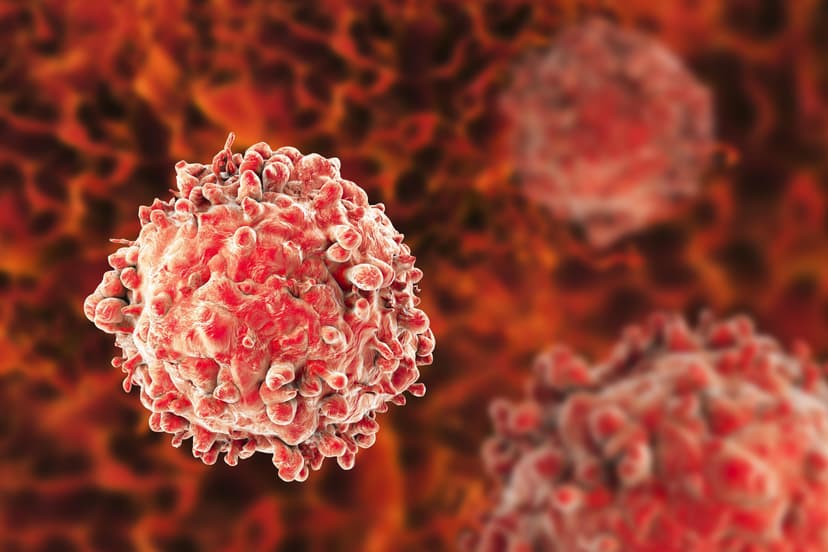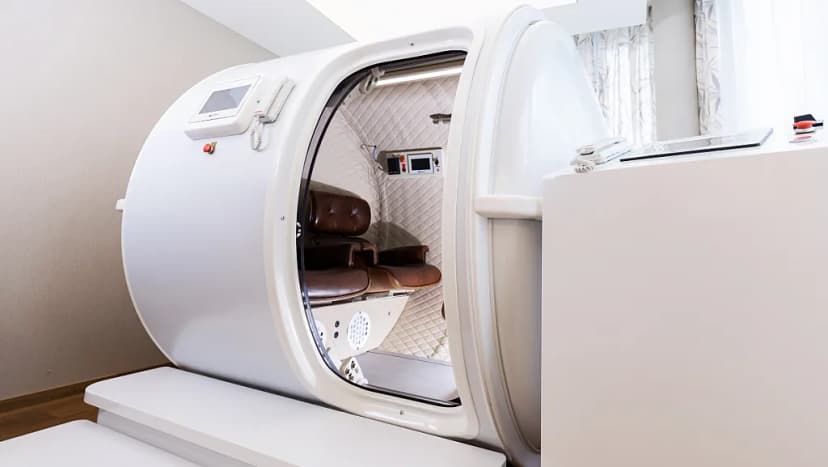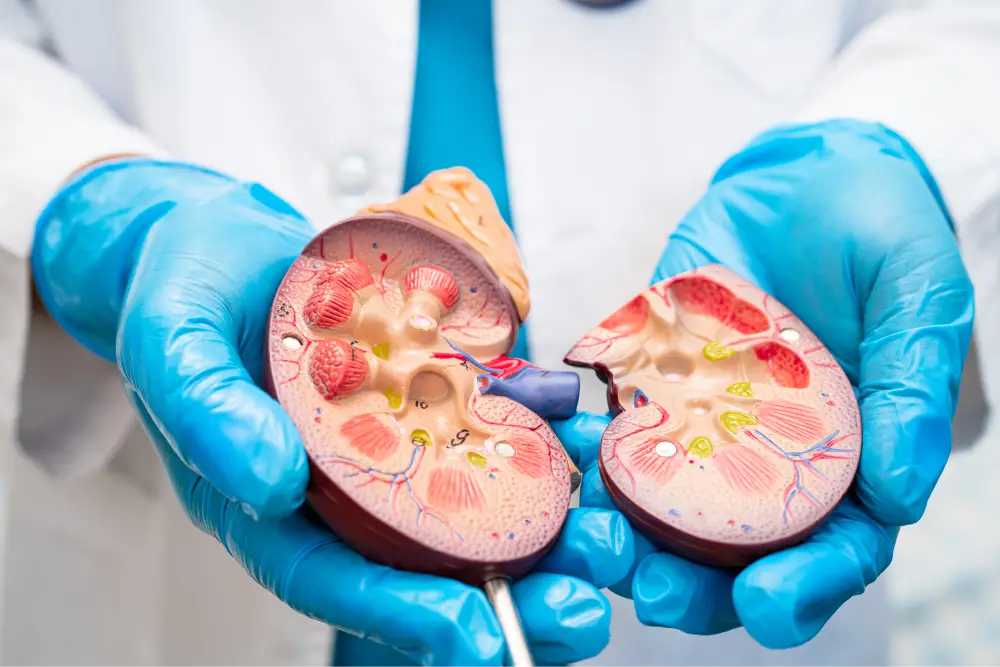Contents
Leukemia is an oncological disease that occurs as a result of dysfunction in the bone marrow. In case of leukemia, white blood cells (lymphocytes) that activate the body's defense system lose their function. Leukemia is known as "blood cancer". Leukemia can be acute or chronic.
Today, leukemia can affect people of all ages. It's one of the most common types of cancer worldwide, and the number of people with leukemia keeps going up each year. In 2023, more than 60,000 people got diagnosed with leukemia.
There are different ways to treat leukemia, like using medicines or radiation therapy. The success of the treatment depends on how advanced the cancer is. If you're considering getting leukemia treatment abroad, our A-Medical medical tourism company is here to help you through the process and answer any questions you have.
In this guide, we'll provide information about getting leukemia treatment in another country. You can learn about the costs, the best countries for treatment, and the top clinics in our article.
A-Medical: Your Partner in Medical Tourism
At A-Medical, we go beyond ordinary medical facilitation services to provide exceptional support and care for your journey to health. Here's why you should choose us:
- No Cost, All Value: Enjoy our expert assistance for free. We believe in transparent, professional services without additional charges. You only pay for your medical procedure.
- Verified Clinics & Doctors Only: We rigorously verify the credentials of every doctor and clinic we work with to ensure your safety and satisfaction.
- 24/7 Support: Throughout your medical journey, our dedicated manager will stay in touch to provide continuous support and promptly resolve any issues that arise.
- Travel to Treatment Under One Roof: We streamline your medical and travel arrangements transparently and professionally, making the process hassle-free.
What is leukemia?
Leukemia can be referred to as blood cancer. Blood cancer, which occurs as a result of stem cells in the bone marrow stopping their development for various reasons and proliferating uncontrollably, can spread first to the bone marrow and then to all organs.
Bone marrow normally makes different kinds of blood cells: white blood cells, red blood cells, and platelets. But in leukemia, bone marrow starts making immature cells called lymphoid and myeloid cells in a strange and uncontrolled way. Leukemia happens because these cancer cells grow out of control and replace healthy blood cells.
Leukemia cells are usually young white blood cells that haven't fully developed.
Unlike some other cancers, leukemia doesn't usually create a lump or tumor that you can see on X-rays or CT scans.
What are the types of leukemia?
Leukemia is put into groups based on how fast it gets worse and the kind of blood cells it affects.
Today, we talk about two kinds of leukemia: (1) acute and (2) chronic leukemia.
Acute leukemia is a quick-growing bone marrow cancer. In it, a bunch of cells in the bone marrow, which make white blood cells, become strange and grow too fast. This makes the bone marrow not make enough blood. Acute leukemia shows symptoms in 1-2 months and needs hospital care. Without treatment, it can lead to death.
Chronic Lymphocytic Leukemia (CLL) is a slow-growing blood cancer that mostly happens in middle-aged or older people. It occurs when lymphocytes, a kind of white blood cell, grow in an uncontrolled way in the bone marrow, blood, and lymph nodes.
There are two other kinds of leukemia, depending on which type of cell is affected. These are (1) lymphocytic leukemia and (2) myeloid leukemia.
Lymphocytic leukemia is when lymphoblasts quickly grow and become lymphocytes, a type of white blood cell. These white blood cells are also known as leukocytes, and they are the most basic type of cells in the bone marrow and blood. This happens due to certain genetic changes.
Myeloid leukemia is when bone marrow cells create red blood cells, platelets, and other white blood cells.
What are the symptoms of leukemia?
Leukemia symptoms are distinct and can be noticed soon after the disease begins. Symptoms are more severe in patients with advanced leukemia.
The most common symptoms of leukemia:
- Weakness
- Pallor
- Don't get tired easily
- Shortness of breath
- Nose, tooth and flesh bleeding (due to weakened immune system)
- Rashes on the skin
The most serious findings that raise suspicion of the disease in many leukemia patients are night sweats, sudden weight loss in a short time, fatigue, enlargement of the neck and armpit lymph nodes, and abdominal swelling.
Remember that these symptoms may also occur due to any infection. Therefore, you should contact a oncologist as soon as you experience these symptoms.
Diagnosing leukemia
Leukemia is diagnosed through similar procedures in all countries in the world.
The process followed for leukemia diagnosis is as follows:
- It is aimed to reveal the type and stage of the disease through many tests, especially comprehensive blood tests.
- During the physical examination, the presence of symptoms indicating leukemia, such as a pale appearance due to anemia, enlarged lymph nodes, spleen, and liver enlargement, is examined.
- X-rays, CT scans, ultrasound or MRI scans are used to check the size of the lymph nodes and whether the disease has spread to which parts of the body.
- Complete blood count, metabolic and biochemical values, liver function tests, and the patient's coagulation-related values are useful tests in the diagnosis of leukemia.
- If the presence of leukemia is suspected (especially for the diagnosis of acute leukemia), the doctor will perform a bone marrow aspiration biopsy.
Leukemia treatment
Once leukemia is diagnosed, treatment must be started without delay. The way leukemia is treated depends on how advanced the disease is.
The treatment plan is determined by the evaluation of a multidisciplinary team (oncologists, hematologists, radiation specialists, etc.). The treatment process for each patient may be different, your doctor will determine the most appropriate treatment options.
Usually treatment for leukemia involves a combination of one or more treatment methods.
Today, the most effective treatment method for leukemia is bone marrow transplantation. In this method, which is called stem cell transplantation, the patient's own healthy marrow or bone marrow can be transplanted from a sibling, close relative or donor who is compatible with the tissue.
Chemotherapy
Chemotherapy entails using specialized drugs to eliminate cancer cells or control their growth. These drugs can be administered through an IV or orally. Sometimes, chemotherapy is also administered into the cerebrospinal fluid to protect the central nervous system or prevent cancer from spreading if it has affected this area.
Chemotherapy is the primary treatment for leukemia.
Radiotherapy
Radiotherapy targets cancer cells with high-energy rays to hinder their growth. For leukemia patients undergoing stem cell treatment, radiotherapy may be applied before the transplant.
Targeted therapies
Certain types of leukemia have access to specific drugs that target cancer cells with particular genetic changes. These targeted therapies may be more effective for leukemia with specific genetic mutations.
CAR T cell treatment
CAR T Cell therapy involves modifying the patient's immune system to fight cancer. It works by altering the genes of immune system cells known as T cells, enabling them to recognize and combat cancer cells.
Bone marrow/stem cell transplantation
This treatment is employed after intensive chemotherapy, particularly for high-risk or recurring leukemia, including solid tumors. Stem cell transplantation involves replacing the patient's damaged or cancer-filled bone marrow with healthy stem cells, which can be obtained from the patient or a suitable donor. This procedure is typically performed following high-dose chemotherapy or radiotherapy.
Leukemia treatment: abroad or at home?
It is common to travel to countries abroad for leukemia treatment. Especially Turkey and Italy have recently become one of the most preferred countries for oncology treatment abroad.
The main reasons why people choose abroad for leukemia treatment:
- The average cost of leukemia treatment abroad is generally much lower than in the UK.
- Some of the most famous oncologists are located abroad.
- Clinics abroad have a higher success rate in leukemia treatment.
- All-inclusive packages for leukemia treatment abroad – which include things like accommodation and airport transfers – provide a stress-free and affordable route to treatment.
Leukemia treatment abroad: how does it work?
Traveling abroad for cancer treatment may seem daunting, but A-Medical simplifies the entire process for you. Obtaining leukemia treatment through A-Medical overseas is not only more cost-effective but also more convenient.
International clinics have extensive experience in delivering top-notch leukemia care to patients from around the world. Our patients who have received leukemia treatment abroad often describe it as a more comfortable and easier experience compared to receiving treatment in their home country.
Step 1: Consultation
If you are considering receiving leukemia treatment abroad, we will conduct a short consultation with you at the first stage. We will obtain all information about your disease from you and examine your medical tests, if any.
Step 2: Contacting the clinic
We will share with you the clinics where you can get the best leukemia treatment abroad. After you decide on the clinic, we will contact the clinic and transfer your medical tests to the clinic.
The clinic's experienced oncologists will review your medical tests and get back to you on whether your treatment is possible.
Step 3: Organizing your trip
We will prepare your travel plan from scratch for your leukemia treatment abroad. We will carefully create every detail so that you do not encounter any problems in the country you will visit.
You will have full support in transportation, logistics, hospital transfer and many more. In addition, A-Medical will provide you with a personal assistant and a translator.
Step 4: Treatment process
After you arrive at the clinic where you will be treated, your treatment process begins following the previously prepared program. In this process, everything continues as planned.
Payment is made directly to the clinic, not to A-Medical, and the relevant payment document (receipt) is presented to A-Medical.
Step 5: Return to your country
After your treatment process is completed according to the determined program, you will be transferred to the airport and return to your country.
After you return to your country, you will have routine doctor consultations (online, if necessary).
Best countries for leukemia treatment abroad
Turkey and Italy stand out as top destinations for leukemia treatment abroad. Boasting high success rates and a wide range of effective treatment options, these countries offer top-notch clinics for leukemia patients.
Turkey
Turkish clinics have demonstrated a much higher success rate in leukemia treatment than many countries in the world. Leukemia treatment in Turkey has become popular among European patients because the treatment standards in Turkey are very high and the prices are lower compared to other countries.
Leukemia treatment in Turkey is carried out with drug treatments, chemotherapy and radiotherapy. Turkey is the country that performs bone marrow transplantation in the treatment of leukemia with the highest success rate in the world. More than 1000 bone marrow transplant surgeries are performed in Turkey every year with a success rate of 99%.
We recommend Acibadem Hospitals, Florence Nightingale and Anadolu Johns Hopkins Hospital for bone marrow transplant surgery in Turkey. These hospitals have a high success rate in treating leukemia.
We highly recommend Gülyüz Öztürk, a renowned Turkish doctor known for her successful bone marrow transplantations in pediatric leukemia treatment, achieving a remarkable zero mortality rate.
For adult leukemia treatment, we suggest Mutlu Arat, who has an outstanding success rate at Florence Nightingale Hospital. Zafer Gülbaş, practicing at Anadolu John Hopkins Hospital, is also recognized for achieving exceptional results in leukemia treatment.
Italy
Italy clinics host the world's best oncologists in the treatment of leukemia. Leukemia treatment in Italy, which has much lower costs compared to other European countries, is a popular choice among foreigners.
If you are looking for the best clinic for leukemia treatment in Italy, you can choose San Raffaele Hospital. San Raffaele Hospital, one of the oldest hospitals in Italy, treats 1.5 million people every year. The hospital is part of Italy's largest hospital group organization and hosts the best oncologists in Europe.
Why choose A-Medical?
At A-Medical, we help international patients to get Leukemia treatment abroad in an affordable, high-quality, and easy way. We help you with everything from informing you about leukemia treatment abroad to managing your treatment process from scratch.
As A-Medical medical tourism company, we offer you the following advantages during your treatment abroad:
- Choosing the most suitable clinic for you
- Making your travel plan
- Obtaining the procedure at discounted prices
- Sending your medical documents to the clinic abroad with their translation
- Arranging a doctor's appointment (video conferencing if necessary)
- Support regarding tickets and visas
- Translator support
- Transfer support
- Establishing communication
- Service to benefit from campaigns and discounts
You can check out our page to learn about all our other services that we have not added yet. If you want to receive leukemia treatment abroad but do not know where to start, you can contact us for a consultation.




